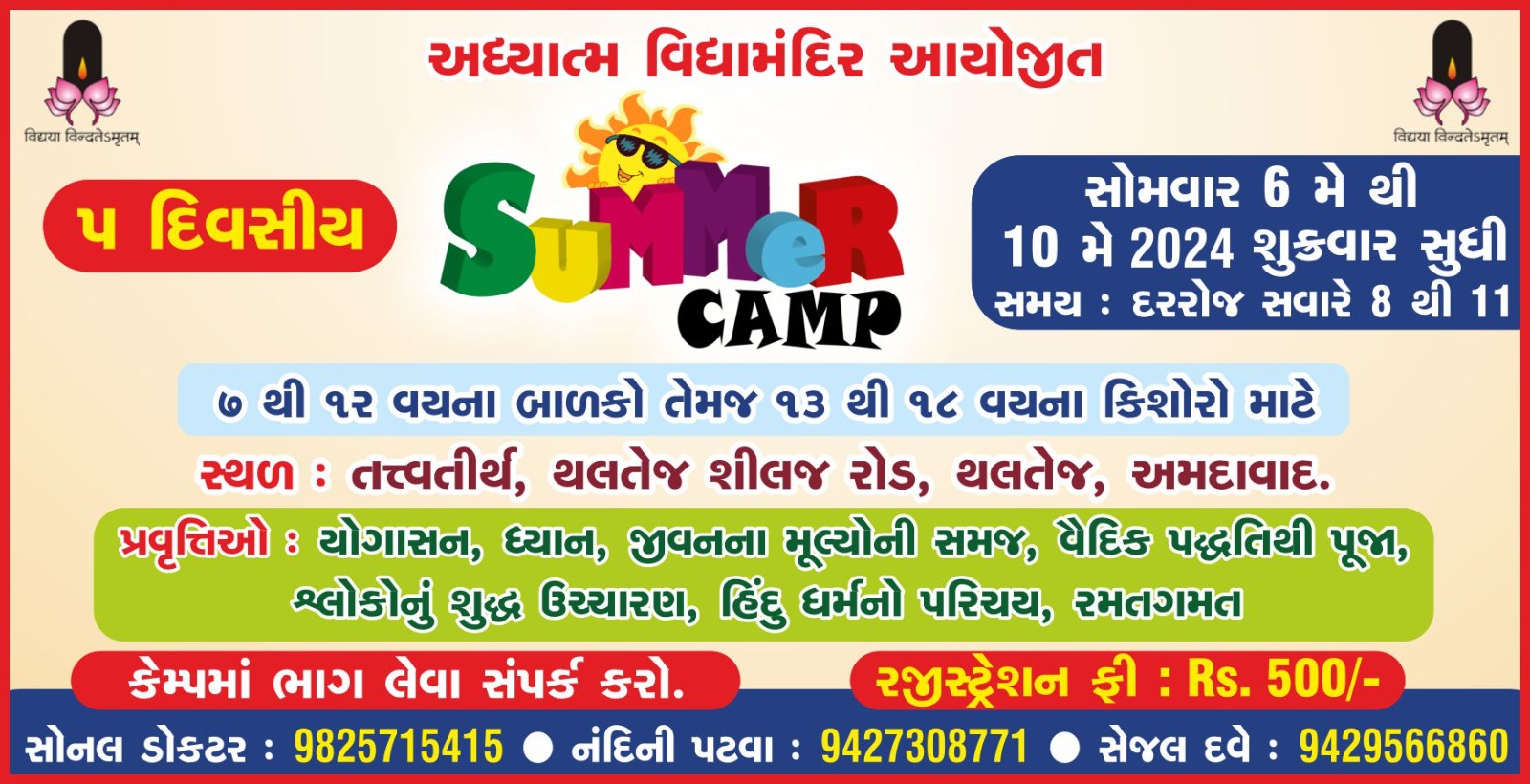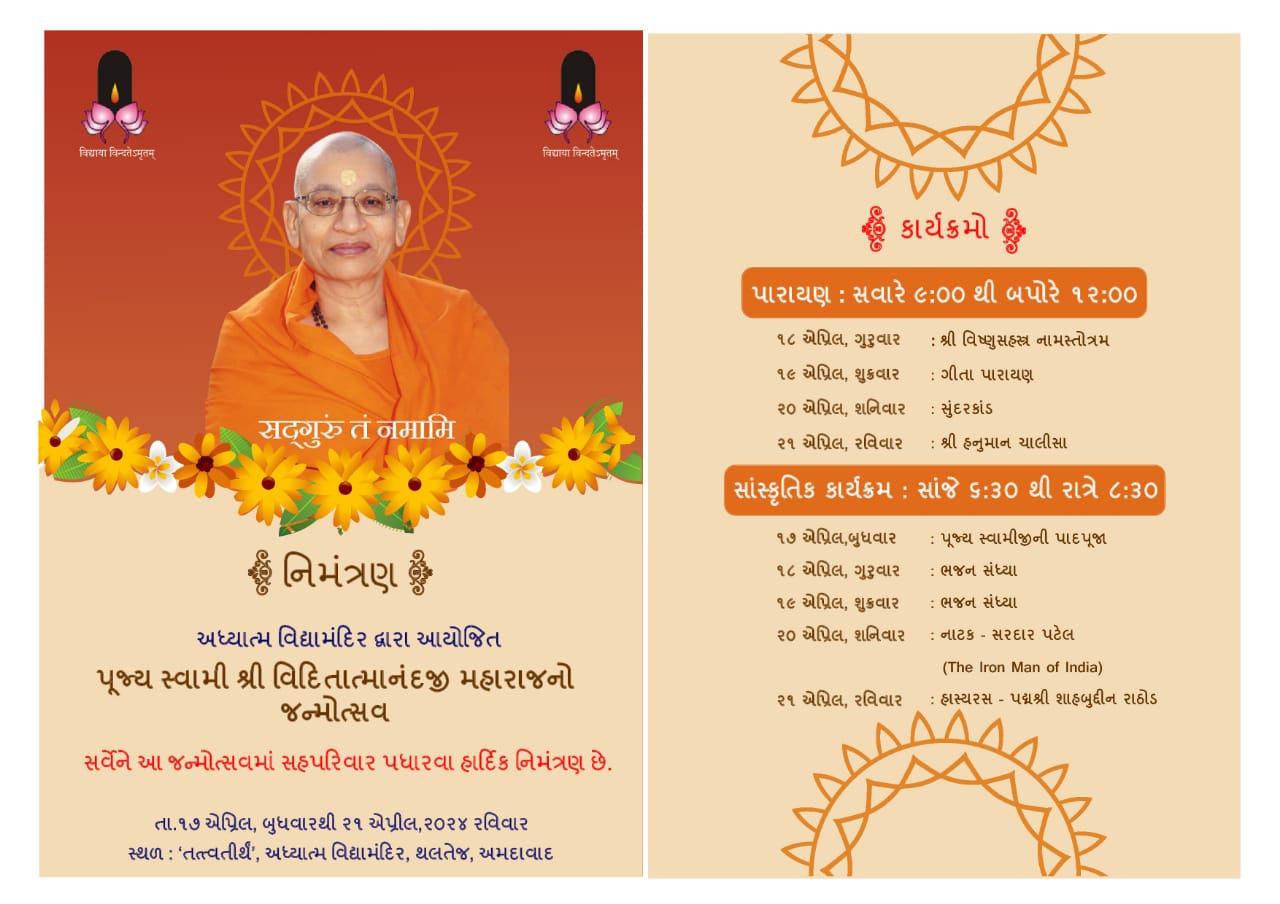श्रीमद्भगवद्गीता Śrīmadbhagavadgītā with Śānkar Bhāsya
Śrīmadbhagavadgītā forms one of the 3 fundamental texts of the Prasthānatrayī studied as part of the Vedanta study. It is a स्मृति प्रस्थान smṛti prasthāna text. Pujya Swamiji explains how Gita is the very nature of Bhagavan, and sung by Bhagavan himself. It is not created, it always abides in Bhagavan’s heart and manifested when Arjuna surrendered himself to Bhagavan and asks for a teaching that will pull him out of the grief and sorrow he was facing.
Arjuna is in the battlefield to fight a war against adharma. But because of wrong identity about himself, and because of attachment with all the relations associated with him, he is deluded and unable to discriminate on what is dharma and adharma in this situation. And he wants to withdraw from the war and adopt a lifestyle of a renunciate. At that time Bhagawan Krishna as though scolds him for expressing such weak emotions at this crucial point of battle. Then as though the mother comes to rescue, and the teaching of भगवद्गीता bhagavadgītā, flows through the mouth of Bhagavan Krishna. Therefore, this grantha is considered equivalent to Veda.
The tātparya, purport of Gita is to reveal that what is considered as Jiva, limited being, in reality is limitless, pūrṇa. According to भाष्यकार bhāṣyakāra, श्री आदि शंकराचार्य śrī ādi śaṁkarācārya, knowledge is the main topic of Gita, and Bhakti or Karma is the secondary topic. Karma and bhakti are the means for knowledge. While the Acharyas of bhakti interpret that bhakti is the main topic of Gita, and knowledge is the means for that bhakti. But Bhāṣyakāra believes the teachings of Gita commences from the verse 11 of Chapter 2, अशोच्यानन्वशोचस्त्वं प्रज्ञावादांश्च भाषसे । गतासूनगतासूंश्च नानुशोचन्ति पण्डिताः, and the teaching ends with Bhagavan’s words in Chapter 18, मा शुचः mā śucaḥ. Bhagavan commences his teaching saying Arjuna is grieving for those who need not be grieved upon.
Pujya Swamiji points out that in reality we alone are the cause of any happiness in our life, as well as any grief or sorrow that we experience in life. So here Arjuna is grieving for himself, that if all these, who are my relatives will be killed, then what about me! I am theirs, and they are mine, what will I do without them! How will I enjoy life without them! How will I have happiness in life after them being killed! This is the state of Arjuna’s mind. He is lamenting about his state upon his relatives being killed in the battle. Pujya Swamiji again points out that any happiness or unhappiness that anyone experiences in life is on account of oneself. One’s identity about oneself.
Arjuna for the first time realizes that Bhagavan alone is capable of getting him out of that grief, and surrenders himself to Bhagavan. He accepts Bhagavan to be his Guru, and makes himself available as a śiṣya. And thus commences the teaching of Gita to Arjuna, and through Arjuna, the entire mankind. The purport of Gita is to remove the grief of mankind, through the fundamental error we are committing. How we are wrongly taking ourself to be other than what we truly are, and all our relations and communications are also affected by this fundamentally wrong foundation about ourselves, about the world and about Iśvara. Through Gita, Bhagavan unfolds our true nature, and Bhāṣyakāra brings out the subtle understanding of each verse, with the purport of the entire Gita and the shastras in mind. As per the commentary by Anandagiriji Maharaj the entire Gita is an unfoldment of the ‘tat tvam asi’ mahāvākya, revealing the identity between jīva, the individual and Iśvara. The first 6 chapters unfold the ‘Tvam’ padārtha, the svarupa of jīva, the second 6 chapters unfolds the ‘Tat’ padārtha, the svarupa of Iśvara, and the last 6 chapters unfolds the ‘asi’ padārtha, with primarily Ch.13-15 unfolding the identity between Jiva and Isvara, Ch.16 and Ch.17 on the adhikārītvam, and Ch.18 on tyāga and conclusion. Gita is one such shastra, where Bhagavan not only unfolds the knowledge but also the means to knowledge, and thus the teachings of Bhagavad Gita are indispensable to understand and be able to enjoy our life.
Pujya Swamiji, through these Pravachanas on Gita Śānkara Bhāṣya, brings out his assimilated knowledge, and points out how our opinions and judgements dictate our interaction with the society. That we do not have freedom in not reacting. Our efforts should be in changing our opinions and being non-judgemental. Then the reactions will also gradually be minimized. These subtleties about life one can gain only through such a Mahatma who is an embodiment of knowledge, love, compassion and simplicity. Only when approached with humility, we the seekers also can gain what Pujya Swamiji offers, and can own up the vision of Gita, the vision of Vedanta, just as Pujya Swamiji has absorbed it through his life’s activities and his personality.
Pujya Swamiji unfolds this text in Gujarati, and the classes are held at the Tattvatirtha Ashram every Monday, Wednesday, Thursday, Saturday evening between 7 to 8pm.



